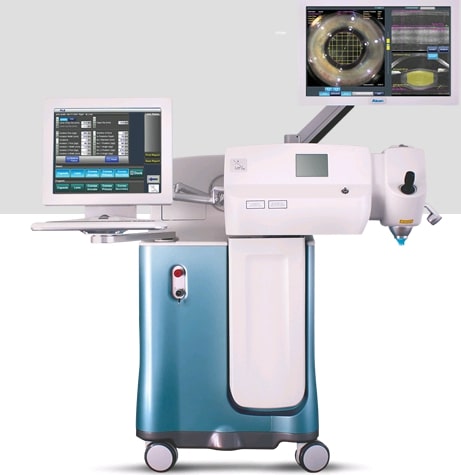What are Cataracts?
A cataract is a clouding of the natural lens of the eye. The most important factor in cataract formation is increasing age, but there are additional factors, including smoking, diabetes, and excessive exposure to sunlight. Cataracts can also be present at birth or be caused by injury to the eye.
More than 20 million Americans over the age of 40 have cataracts, and it is the most common cause of preventable blindness in the world.


When is Cataract Surgery Necessary?
Having a cataract does not necessarily mean that you need surgery. A cataract needs to be removed only when vision loss interferes with your everyday activities, such as driving, reading, or watching TV. The decision to have cataract surgery is one that you and your doctor should make together.
While a comprehensive eye examination by an eye care practitioner can determine the presence of a cataract, there are a number of signs and symptoms which may indicate a cataract:
- A blurred or hazy vision where colors may seem yellowed
- A tendency to become more nearsighted
- A gradual loss of color vision
- The feeling of having a film over the eyes
- Increased sensitivity to glare, especially at night
Laser Cataract Surgery with Femtosecond Laser
Traditionally, a high-powered ultrasound instrument is used to break up the cataract. Now, the Femtosecond Laser is the latest device that creates bursts of laser energy at an extremely fast rate measured in terms of a unit known as a femtosecond (one quadrillionth of a second). These ultra-fast energy pulses precisely target and breaks apart tissue or other substances at a molecular level, without damaging adjacent areas. The LenSx Laser is an effective technological advancement that ensures the highest level of precision throughout every step of the cataract surgical procedure.
LenSx® Laser
The LenSx® Laser from Alcon is the first femtosecond laser to receive FDA approval for use in cataract surgery. The LenSx Laser offers three-dimensional, high-resolution images that map the unique eyes of each patient. These images, combined with the computer-captured measurements and information about the eyes, allow the surgeon to achieve greater accuracy, precision, and customization than ever before.
The LenSx Laser is optimized with true image guidance, helping the surgeon determine the best location and dimensions for incisions. The bladeless femtosecond laser pulses to create incisions in the lens capsule, crystalline lens, and cornea with a high level of accuracy.
What is ORA System Technology?
The ORA System allows the surgeon to determine the most suitable lens implant in REAL-TIME during the surgery. This allows the doctor to obtain the best visual result for the patient. This is not possible with conventional instruments.
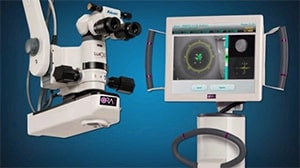
Prior to the ORA System, surgeons were unable to assess the quality of vision during the procedure, and would often have to wait until weeks after the surgery to determine the accuracy of the surgical results.
At any point, the surgeon can easily take a measurement, which is then analyzed by ORA System Technology to provide specific information used to optimize decision-making in correcting the vision of that eye.
ORA System FAQs
Is ORA analysis necessary for cataract surgery after laser vision correction?
It is more difficult to calculate the proper intraocular lens implant correctly in someone who has had laser vision correction on the cornea, even with the appropriate pre-operative testing that includes IOL Master, corneal topography and other measures of the eyes.
However, the ORA System uses a wavefront analysis of the eye during the operation at the point after the cataract is removed and before the intraocular lens is inserted. The information obtained is then plugged into a mathematical formula that can then calculate the proper intraocular lens.
How does the ORA System work?
The ORA SYSTEM assesses your eye during cataract surgery, much like a GPS system tracks your progress on the road. With this data, your doctor can make real-time adjustments to arrive at a better result.
How Will Customized Cataract Surgery Enhance My Outcomes?
During a customized procedure, your doctor can use the ORA SYSTEM to analyze the state of your eye during the procedure to confirm your vision correction needs. This differs from basic cataract surgery, where visual disorders are addressed afterward, during follow-up visits.
Does customized cataract surgery cost more?
While customized procedures are associated with an increased expense compared with basic cataract surgery, the investment may help reduce the need for glasses.
New Technology in Cataract Surgery
We perform a minimally invasive, no-stitch laser cataract surgery. The patient is given anesthesia to numb the eye. A tiny incision (2.75 mm or less) is made into the eye and a small ultrasonic probe is inserted. This probe breaks the cloudy lens into tiny pieces and gently removes those pieces out of the eye.
Cataract surgery is a common outpatient procedure and one of the safest and most successful surgical procedures performed today. During cataract surgery, the cloudy natural lens is removed and replaced with a clear synthetic lens called an IOL (intraocular lens) to restore vision. Until recently, the only option was a fixed-focus lens, typically designed for correcting distance vision, which left the patient needing reading glasses to see up close. New multifocal lenses are now available that allow cataract patients to see not only far away, but also at near and computer distances without wearing glasses. Since the multifocal lenses are relatively new, not all cataract surgeons are trained to implant them.
There is a wide range of replacement lenses available to cataract patients, each offering different advantages for your post-surgical vision. The most effective lens implant depends on each patient's individual preferences and goals for their vision. The latest lens implants help eliminate the need for glasses or contacts after cataract surgery, providing convenient, effective results for your specific visual conditions.
Multifocal IOL Options
In the past, cataract implants were only able to correct distance vision, often leaving patients with the need for reading glasses. Multifocal IOLs offer patients freedom from glasses after cataract surgery by improving vision at all distances and at any time of day. Up to 80 percent of patients do not need to rely on glasses with multifocal IOLs.
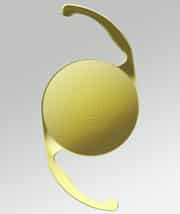
Tecnis® Multifocal IOL
The Tecnis Multifocal intraocular lens (IOL) can be used for those patients with or without presbyopia who want to have near, intermediate, and distance vision without relying on glasses or contact lenses. Cataract surgery, which replaces the eye's cataract-impaired lens with an artificial clear lens (IOL) is the most commonly performed surgical procedure in the United States.
Benefits Of Multifocal IOLs
The Tecnis IOL was designed to provide cataract surgery patients with a high-quality vision similar to that of a younger person. The Tecnis IOL is meant to improve functional vision - the ability to see objects in varying light conditions - especially at night and twilight and in the rain, snow, and fog. This means improved night vision and reduction of spherical aberrations, an undesirable scattering of light that is a common side effect of cataract surgery.
Unlike other multifocal IOLs, the Tecnis Multifocal IOL provides the following benefits:
- Excellent vision at all distances
- Excellent vision at all light levels
- Do not require reading glasses
AcrySof® IQ ReSTOR® IOL
AcrySof® IQ ReSTOR® IOL is an intraocular lens that provides a full range of vision for patients after cataract surgery, significantly decreasing their dependence on glasses or contact lenses. The ReSTOR IOL replaces the natural lens of the eye which has been removed during surgery. Its optic design enables it to bend light to a focal point of the retina, facilitating distance vision. By distributing light on the retina in such a way that images at various distances are clearly perceived, it provides multifocal visual clarity.
The ReStor IOL has been shaped using a special process called apodized diffraction to provide an increased depth of focus. Diffraction involves the bending or spreading of light to multiple focal points as it passes through the lens. Apodization is a process through which such light is gradually tapered to create a smooth transition which allows accurate focus at various distances.
The lens of the ReSTOR IOL is convex on both sides, or biconvex, and is made of soft plastic so that it can be folded prior to insertion. This allows the surgeon to make an incision smaller than the diameter of the lens itself. After the IOL has been surgically inserted into the eye, it gently unfolds to restore vision. The IOL is constructed with supporting arms which provide for proper positioning in the eye.
Candidates For ReSTOR IOL Treatment
Any individual who desires multifocal vision without the use of reading glasses, bifocals, or contact lenses may be a candidate for ReSTOR IOL. While the ReSTOR IOL was originally designed for patients with cataracts, having cataracts is not necessary to qualify for the ReSTOR IOL. Patients with chronic infections, uncontrolled diabetes, or other health problems may have to wait until these conditions are under control before they can undergo this corrective eye surgery.
Benefits Of ReSTOR IOL Treatment
There are several benefits to ReSTOR IOL treatment which include:
- A soft, foldable acrylic lens
- The smaller incision in the eye
- Correction for both cataracts and presbyopia
- Filtering of blue light for more vivid color perception
- Correction of spherical aberrations that appear with age
Toric IOLs for Astigmatism
Toric IOLs are specifically designed for patients with astigmatism. In the past, patients with astigmatism would need eyeglasses or contact lenses even after cataract surgery as the basic lens implants did not correct for astigmatic refractive error. Toric IOLs, such as AcrySof Toric ®, corrects cataracts, and astigmatism with just one lens and provides a more convenient and affordable solution.
AcrySof® IQ Toric IOL
Intraocular lenses are used during cataract surgery to replace the damaged lens of the eye with an implant that clears up and corrects vision, oftentimes leaving patients with little to no dependence on glasses.
Up until now, patients with astigmatism did not have the same opportunities that other cataract patients have had in correcting their condition with the types of IOL lenses that were available. Typically, the astigmatic patient would need an additional surgical procedure, such as refractive surgery or LASIK, to correct their vision after the procedure.
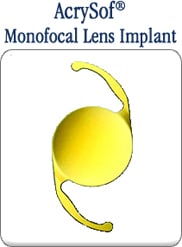
If the patient did not want to undergo another surgical procedure, the only option for correction would be the use of either contact lenses or glasses to address their astigmatism.
Toric IOLs are able to accommodate the condition of astigmatism. Toric IOLs are specially designed to correct astigmatism along with overall vision during cataract surgery, offering complete vision correction.
TECNIS® SYMFONY, Multifocal / Astigmatism Iol
The latest addition to the TECNIS® Family of IOLs offers new optical technology for providing an Extended Range of Vision. Trifocals Toric Cataract lens.
Traditional IOL solutions for treating presbyopia include Multifocal and Trifocals, which work on the principle of simultaneous vision by splitting light into multiple distinct foci, and Accommodative IOLs, which change in shape and power when the ciliary muscle contracts.
Traditionally with these technologies, the correction of presbyopia is commonly thought of in terms of the distinct distance for which functional vision is provided.
Extended Range of Vision IOL is available in both a Non-Toric version and a Toric version for patients with astigmatism.
Clareon Vivity, EDOF IOL
Clareon Vivity is an EDOF IOL (Extended Depth of Focus intraocular lens), the first and only non-diffractive presbyopia-mitigating IOL with exceptional clarity. It is designed to provide a continuous range of vision from near to intermediate with functional near vision, reducing the need for glasses or contact lenses after cataract surgery. It enables the individual to see things more clearly from a distance, such as when typing on a computer. It is also effective for enhancing viewing of close-up activities such as reading or shaving.
Vivity IOLs provide a single point of focus. The wavefront-shaping lens allows light into the eye through this focal point. It focuses the light on the back of the eye more accurately, creating sharper images across multiple focusing distances.
It is a good option for individuals who:
1. Want to reduce their dependence on glasses or contacts.
2. Have realistic expectations about completely eliminating the need for glasses or contacts.
3. Are amenable to paying some of the cost out-of-pocket since the advanced lenses are more expensive than standard monofocal intraocular lenses.
In a clinical study, 106 patients were asked about their experience with the Vivity Lens:
- Over 90% reported they were satisfied with their near vision.
- 94% of patients reported rarely or never needing eyeglasses or contacts at a distance.
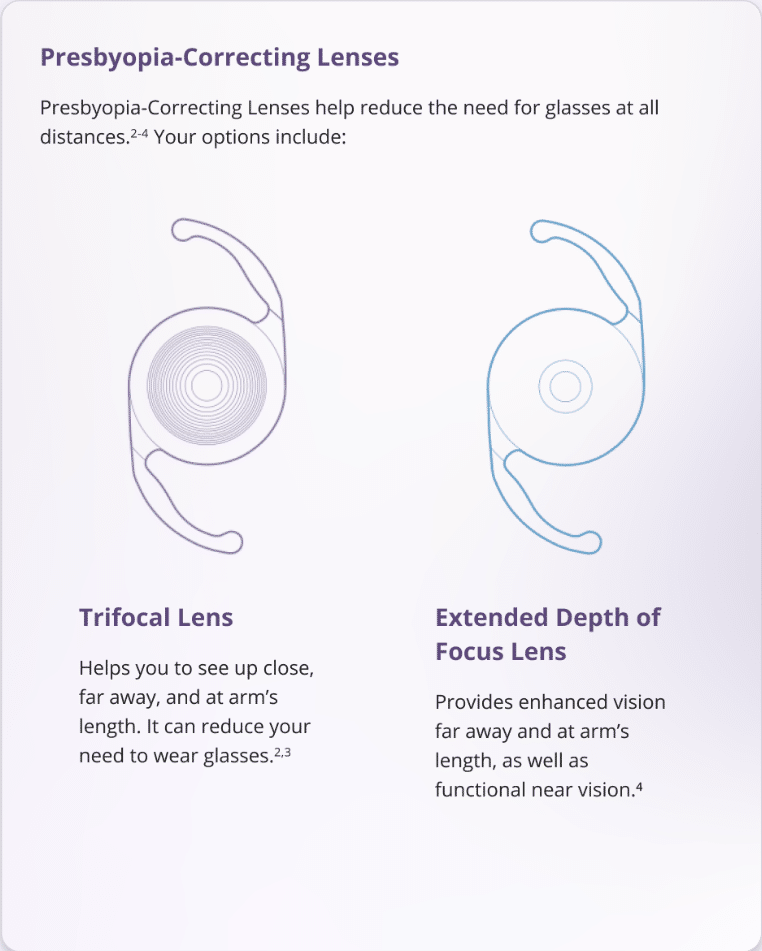
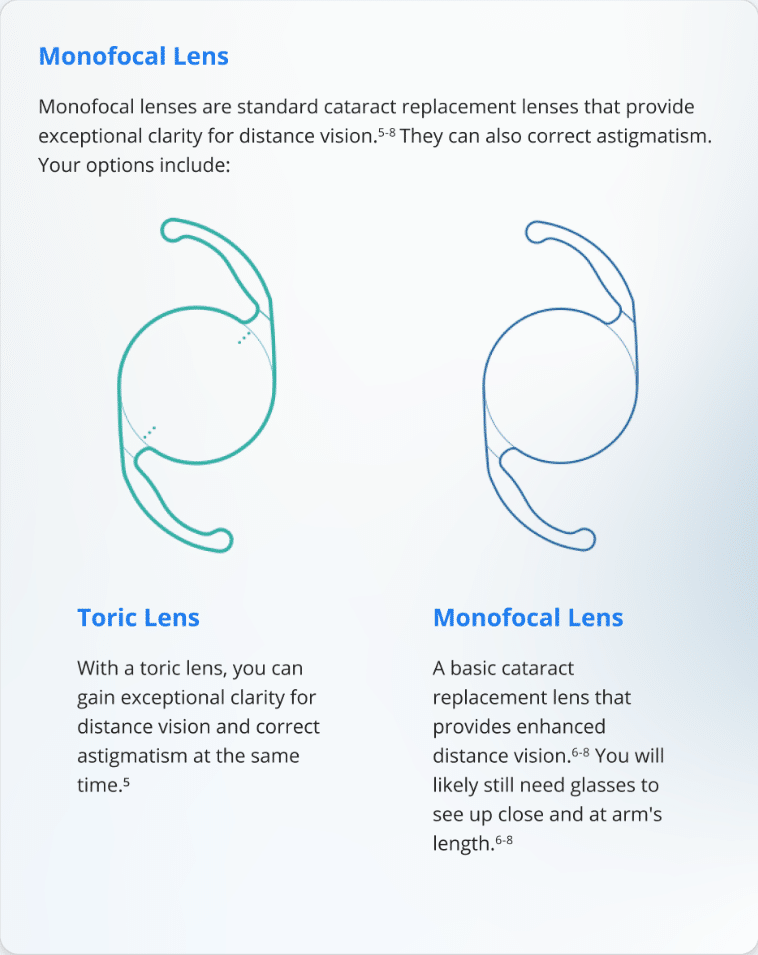
Clareon PanOptix
The Clareon PanOptix Trifocal Lens provides patients with the opportunity to gain vision that is crisp and sharp. It enhances vision for clear, complete focus and without blurry zones.
Although a monfocal lens can help with seeing things in the distance, the PanOptix lens provides a full range of vision enabling the individual to participate in a full range of activities, all while relying less on glasses.
Benefits include:
1) Seeing far away with clear distance vision; ability to see a familiar face, drive a car, watch TV.
2) Seeing at arm’s length with enhanced intermediate vision; ability to use a computer, read a menu, see in a mirror.
3) Seeing up close with excellent near vision; ability to read a book, take up crafting, use a cell phone.
4) Ability to identify bright, vivid colors.
In a clinical study, 129 patients were asked about their experience with the PanOptix Lens:
- 99% of patients with the Clareon PanOptix Lens would chose the same lens again
- 98% of patients with the Clareon Panoptix Lens would recommend it to family and friends
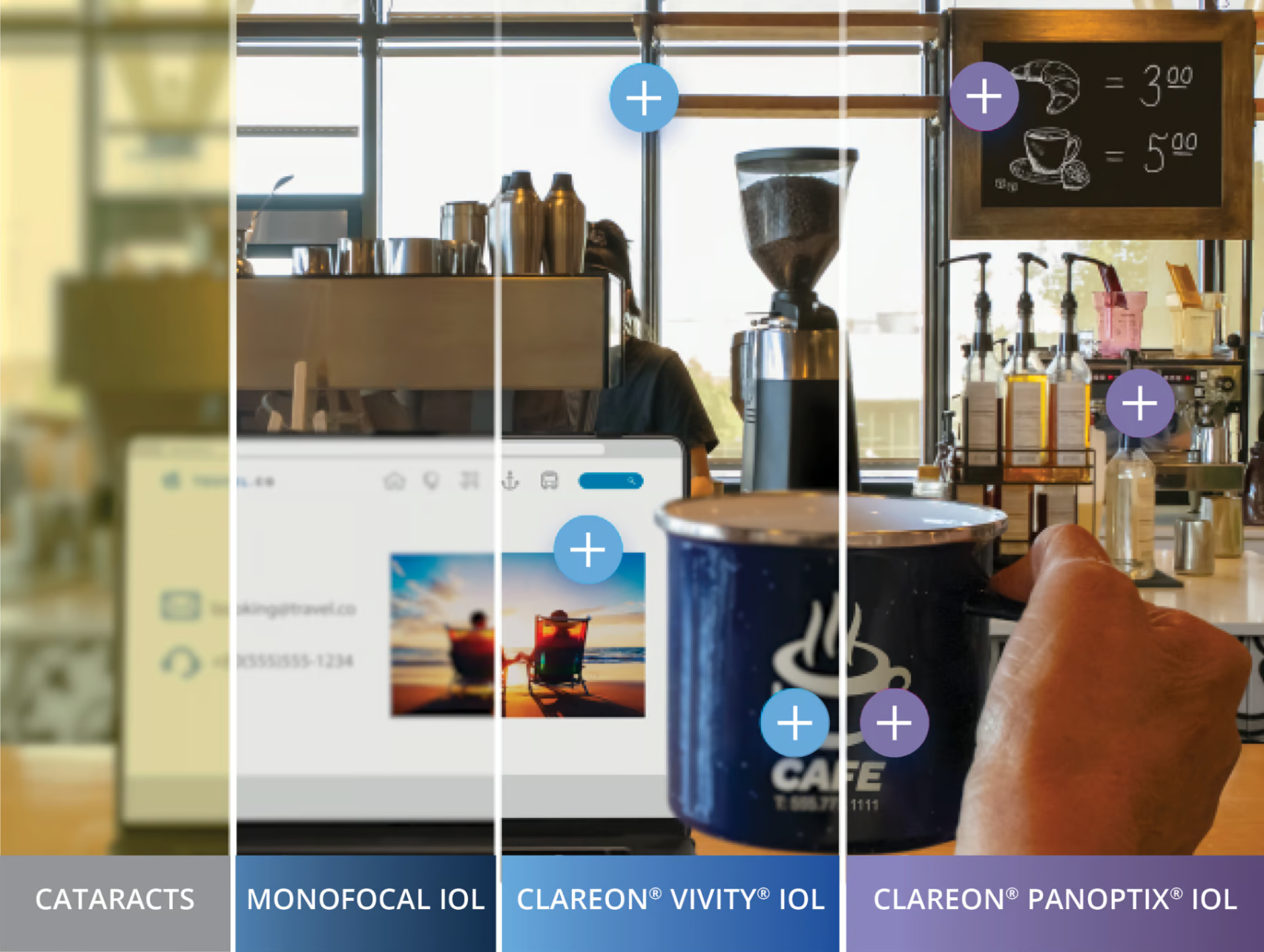
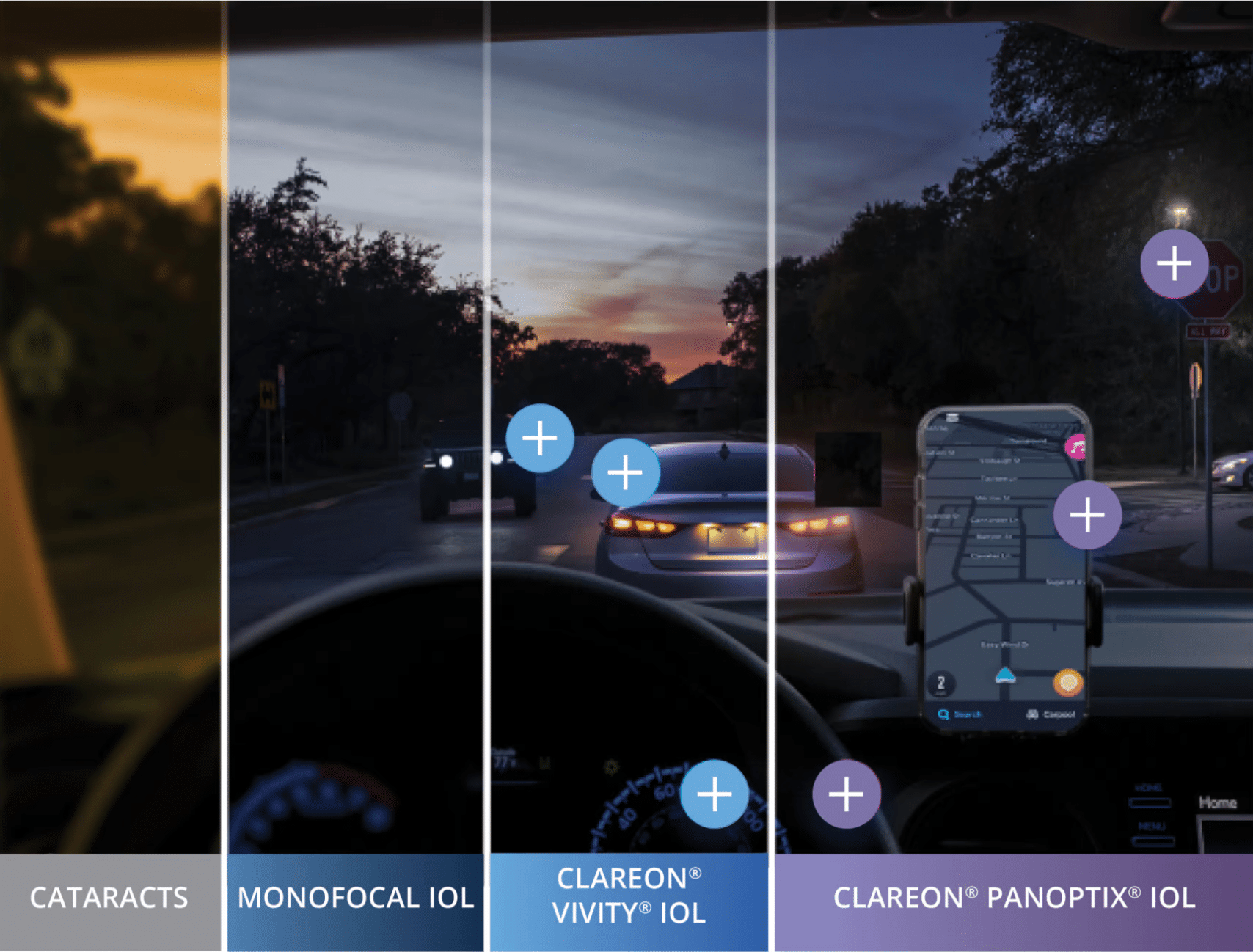
The doctor will determine which lens is right for the patient after a comprehensive eye exam and an evaluation of their medical history and the goals they want to achieve with the surgery.
The doctor will determine which lens is right for the patient after a comprehensive eye exam and an evaluation of their medical history and the goals they want to achieve with the surgery.
References
Alcon images, accessed 28 November 2023,< https://www.myalcon.com/cataracts/clareon-iols >


